1.1 Psychology’s Roots
Once upon a time, on a planet in our neighborhood of the universe, there came to be people. These creatures became intensely interested in themselves and one another. They wondered, “Who are we? Why do we think and feel and act as we do? And how are we to understand—
To be human is to be curious about ourselves and the world around us. The ancient Greek naturalist and philosopher Aristotle (384–
Psychology asks similar questions. But today’s psychologists search for answers differently, by scientifically studying how we act, think, and feel. (See Thinking Critically About: The Scientific Attitude.)
Psychological Science’s Birth and Development
LOQ 1-
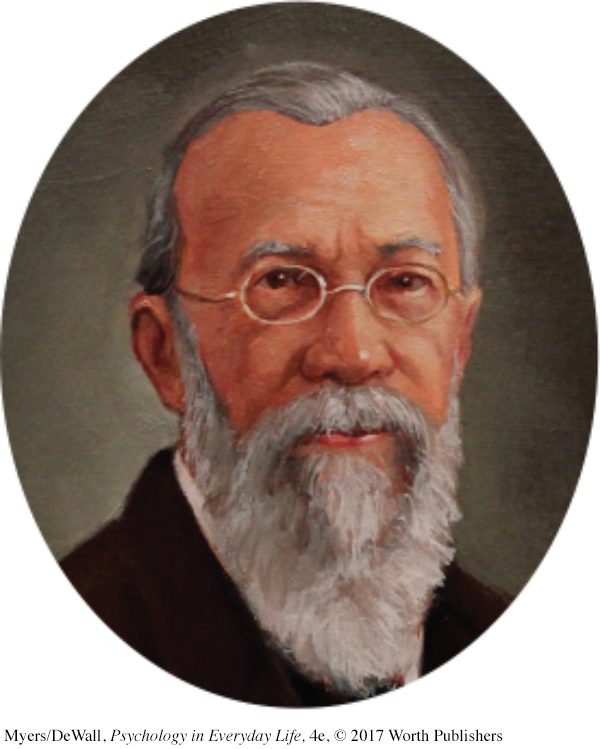
Psychology as we know it was born on a December day in 1879, in a small, third-
Psychology’s earliest pioneers—
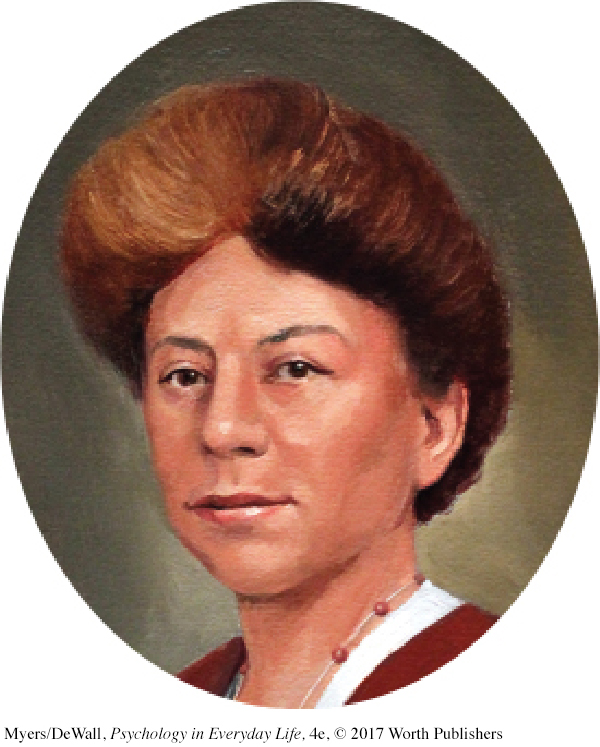
Few of psychology’s early pioneers were women. In the late 1800s, psychology, like most fields, was a man’s world. William James helped break that mold when he accepted Mary Whiton Calkins into his graduate seminar. Although Calkins went on to outscore all the male students on the Ph.D. exams, Harvard University denied her the degree she had earned. In its place, she was told, she could have a degree from Radcliffe College, Harvard’s undergraduate “sister” school for women. Calkins resisted the unequal treatment and turned down the offer. But she continued her research on memory, which her colleagues honored in 1905 by electing her the first female president of the American Psychological Association (APA). Animal behavior researcher Margaret Floy Washburn became the first woman to officially receive a psychology Ph.D. and the second, in 1921, to become an APA president.
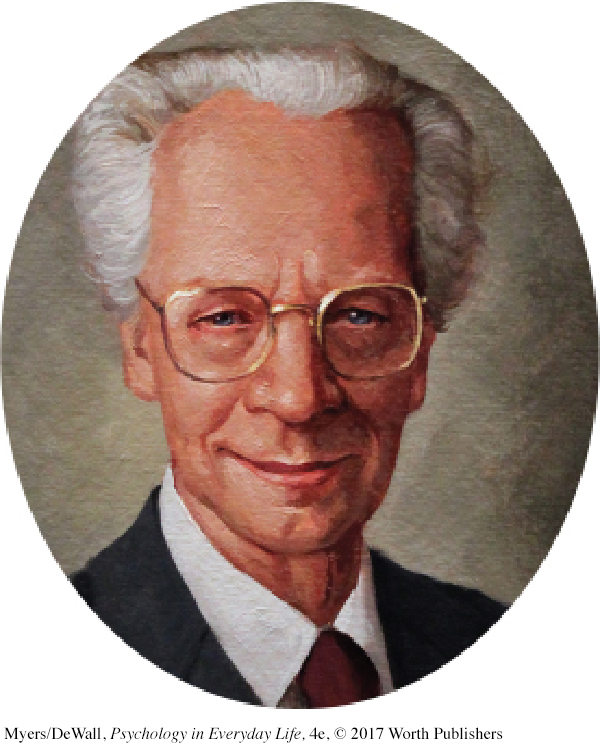
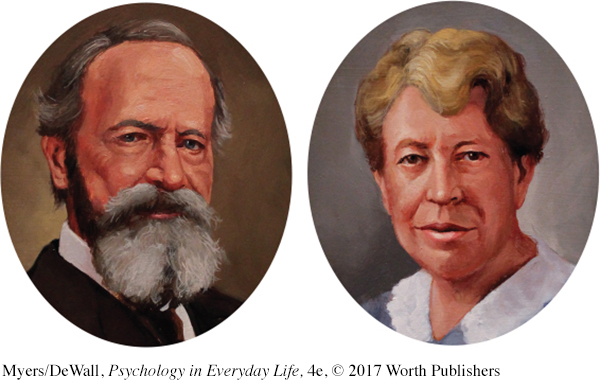
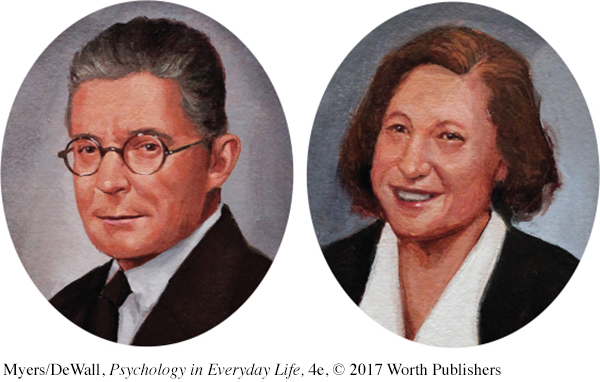
The rest of the story of psychology—
behaviorism the view that psychology (1) should be an objective science that (2) studies behavior without reference to mental processes. Most psychologists today agree with (1) but not with (2).
For the early pioneers, psychology was defined as “the science of mental life.” And so it continued until the 1920s, when the first of two larger-
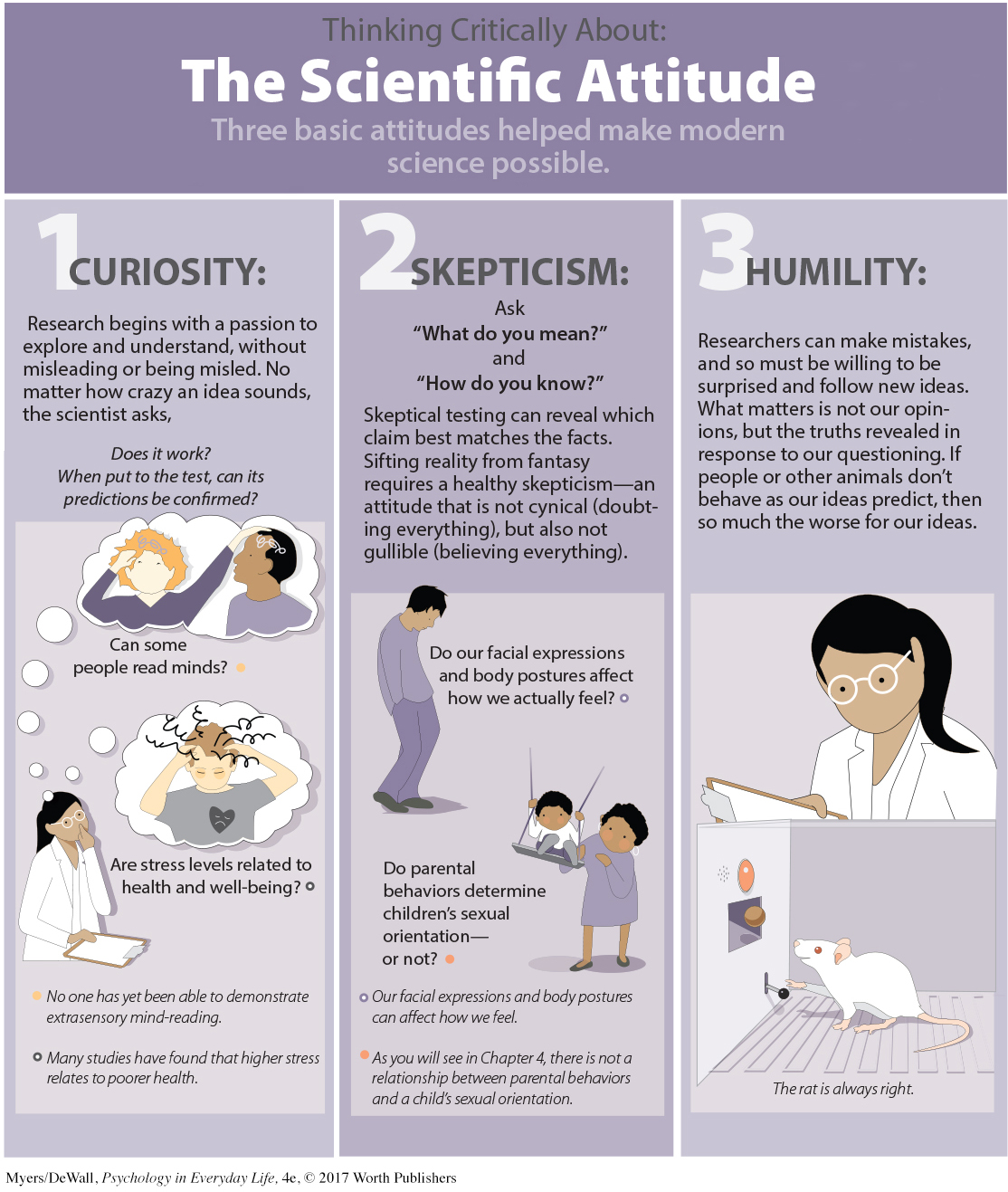
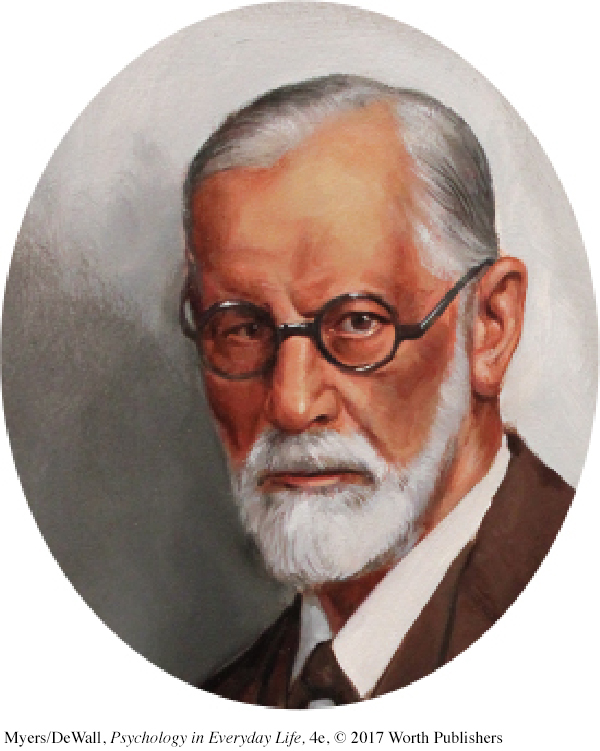
The other major force was Freudian psychology, which emphasized our unconscious thought processes and our emotional responses to childhood experiences. Some students wonder: Is psychology mainly about Freud’s teachings on unconscious sexual conflicts and the mind’s defenses against its own wishes and impulses? No. Psychology is much more, though Freudian psychology did have an impact. (In chapters to come, we’ll look more closely at Freud and others mentioned here.)
humanistic psychology historically important perspective that emphasized human growth potential.
As the behaviorists had rejected the early 1900s definition of psychology, other groups in the 1960s rejected the behaviorists’ definition. The humanistic psychologists, led by Carl Rogers and Abraham Maslow, found both behaviorism and Freudian psychology too limiting. Rather than focusing on conditioned responses or childhood memories, Rogers and Maslow stressed people’s growth potential. They drew attention to our needs for love and acceptance and to the ways that an environment can help or hinder personal growth.
cognitive psychology the study of mental processes, such as occur when we perceive, learn, remember, think, communicate, and solve problems.
cognitive neuroscience the interdisciplinary study of the brain activity linked with mental activity (including perception, thinking, memory, and language).
psychology the science of behavior and mental processes.
 is a research-
is a research-
Another group searching for a new path in the 1960s pioneered a cognitive revolution, which led the field back to its early interest in mental processes. Cognitive psychology today continues its scientific exploration of how we perceive, process, and remember information, and of how thinking and emotion interact in anxiety, depression, and other disorders. The marriage of cognitive psychology (the science of the mind) and neuroscience (the science of the brain) gave birth to cognitive neuroscience. This specialty, with researchers in many disciplines, studies the brain activity underlying mental activity.
Today’s psychology builds upon the work of many earlier scientists and schools of thought. To include psychology’s concern with observable behavior and with inner thoughts and feelings, we now define psychology as the science of behavior and mental processes.
 For an excellent tour of psychology’s roots, view the 9.5-
For an excellent tour of psychology’s roots, view the 9.5-
Let’s unpack this definition. Behavior is anything a human or nonhuman animal does—any action we can observe and record. Yelling, smiling, blinking, sweating, talking, and questionnaire marking are all observable behaviors. Mental processes are the internal states—
The key word in psychology’s definition is science. Psychology, as we will stress again and again, is less a set of findings than a way of asking and answering questions. Our aim, then, is not merely to report results but also to show you how psychologists play their game, weighing opinions and ideas. And we hope you, too, will learn how to play the game—
Retrieve + Remember4
Question 1.1
•Describe the three parts of the scientific attitude.
ANSWER: The scientific attitude combines (1) curiosity about the world around us, (2) skepticism about unproven claims and ideas, and (3) humility about our own understanding. These three traits guide psychologists as they consider ideas and test them with scientific methods. Ideas that don’t hold up will then be discarded.
Question 1.2
•What event defined the start of scientific psychology?
ANSWER: Scientific psychology began in Germany in 1879, when Wilhelm Wundt opened the first psychology laboratory.
Question 1.3
•How did the cognitive revolution affect the field of psychology?
ANSWER: It led the field back to its early interest in mental processes and made them acceptable topics for scientific study.
Contemporary Psychology
LOQ 1-
Psychologists’ wide-
| Perspective | Focus | Sample Questions | Examples of Subfields Using This Perspective |
|---|---|---|---|
| Neuroscience | How the body and brain enable emotions, memories, and sensory experiences | How do pain messages travel from the hand to the brain? How is blood chemistry linked with moods and motives? | Biological; cognitive; clinical |
| Evolutionary | How the natural selection of traits passed down from one generation to the next has promoted the survival of genes | How has our evolutionary past influenced our modern- |
Biological; developmental; social |
| Behavior genetics | How our genes and our environment influence our individual differences | To what extent are psychological traits such as intelligence, personality, sexual orientation, and optimism products of our genes? Of our environment? | Personality; developmental; legal/forensic |
| Psychodynamic | How behavior springs from unconscious drives and conflicts | How can someone’s personality traits and disorders be explained in terms of their childhood relationships? | Clinical; counseling; personality |
| Behavioral | How we learn observable responses | How do we learn to fear particular objects or situations? What is the most effective way to alter our behavior, say, to lose weight or stop smoking? | Clinical; counseling; industrial- |
| Cognitive | How we encode, process, store, and retrieve information | How do we use information in remembering? Reasoning? Solving problems? | Cognitive neuroscience; clinical; counseling; industrial- |
| Social- |
How behavior and thinking vary across situations and cultures | How are we alike as members of one human family? How do we differ as products of our environment? | Developmental; social; clinical; counseling |
Psychology also relates to many other fields. You’ll find psychologists teaching not only in psychology departments but also in medical schools, law schools, business schools, and theological seminaries. You’ll see them working in hospitals, factories, and corporate offices. In this course, you will hear about
biological psychologists exploring the links between brain and mind.
developmental psychologists studying our changing abilities from womb to tomb.
cognitive psychologists experimenting with how we perceive, think, and solve problems.
personality psychologists investigating our persistent traits.
social psychologists exploring how we view and affect one another.
counseling psychologists helping people cope with personal and career challenges by recognizing their strengths and resources.
health psychologists investigating the psychological, biological, and behavioral factors that promote or impair our health.
clinical psychologists assessing and treating people with mental, emotional, and behavior disorders. (By contrast, psychiatrists are medical doctors who also prescribe drugs when treating psychological disorders.)
industrial-
organizational psychologists studying and advising on workplace-related behaviors and system and product designs. community psychologists working to create social and physical environments that are healthy for all.
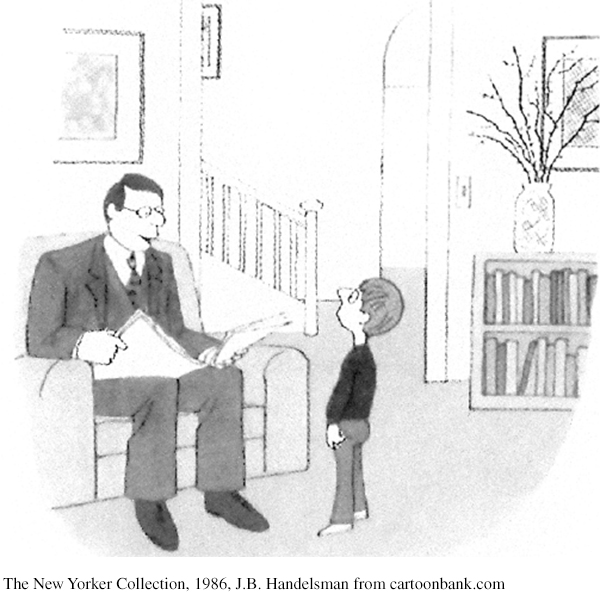
Psychology is both a science and a profession. Some psychologists conduct basic research, to build the field’s knowledge base. Others conduct applied research, tackling practical problems. Many do both.
Psychology also influences modern culture. Knowledge transforms us. After learning about psychology’s findings, people less often judge psychological disorders as moral failures. They less often regard women as men’s inferiors. They less often view children as ignorant, willful beasts in need of taming. And as thinking changes, so do actions. “In each case,” noted Hunt (1990, p. 206), “knowledge has modified attitudes, and, through them, behavior.” Once aware of psychology’s well-

 Want to learn more? See Appendix C, Subfields of Psychology, at the end of this book, and go to LaunchPad’s regularly updated Careers in Psychology resource to learn about the many interesting options available to those with bachelor’s, master’s, and doctoral degrees in psychology.
Want to learn more? See Appendix C, Subfields of Psychology, at the end of this book, and go to LaunchPad’s regularly updated Careers in Psychology resource to learn about the many interesting options available to those with bachelor’s, master’s, and doctoral degrees in psychology.
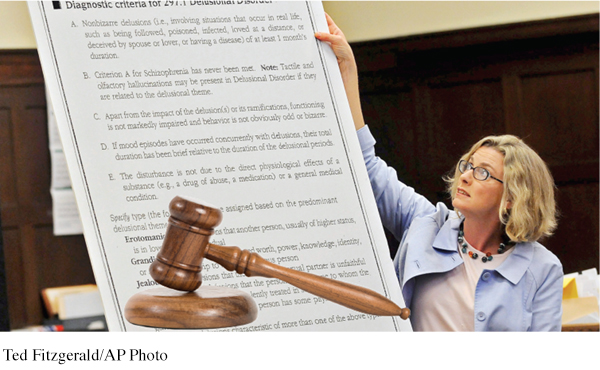
Retrieve + Remember
Question 1.4
•The _____________ perspective in psychology focuses on how behavior and thought differ from situation to situation and from culture to culture.
ANSWER: social-
Question 1.5
•The _____________ perspective emphasizes how we learn observable responses.
ANSWER: behavioral